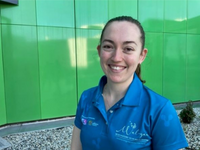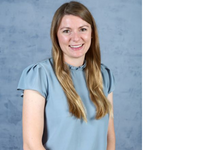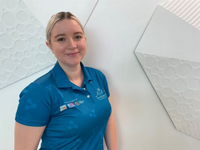A large contingent of researchers from the Wal-yan Respiratory Research Centre are heading to Spain in September to participate in the European Respiratory Society (ERS) International Congress – the largest respiratory meeting in the world.
The ERS Congress, being held in Barcelona from 4 – 6 September, is an annual occasion when the world’s respiratory experts come together, to present and discuss the latest scientific and clinical advances across the entire field of respiratory medicine.
Many Wal-yan researchers will contribute to the outstanding scientific programme of the Congress. Amongst those presenting are two ERS award winners, Grace Pettigrew and Elizabeth Smith, whose high-quality abstracts were recognised as being the best within their award categories. Grace and Elizabeth were awarded funding towards their travel and Congress attendance. Congratulations Grace and Elizabeth, and all Wal-yan Centre researchers presenting at the Congress.
Some of the research presentations include the following:
Tiffany Bradshaw

Presentation: Detecting reversible airway disease in those born preterm – which is the best test?
About the study:
Survivors of very preterm birth (born at less than 32 weeks gestation) often report an increase in prevalence of respiratory symptoms, asthma diagnosis and asthma medication usage. Spirometry is a lung function test that is used to help identify a bronchodilator response (a change in lung function after a Ventolin puffer), which is a marker of reversible airway disease and common in those with asthma. A bronchodilator response by spirometry is present in approximately one third of children born preterm.
Spirometry can be a tricky test for anyone to complete and developmental delays in many preterm born children may inhibit the use of spirometry and furthermore detection of a bronchodilator response. Oscillometry is another lung function test often found to be much easier to complete. Studies in other populations has found oscillometry to be better at differentiating those with a bronchodilator response, to those who are healthy. It is not entirely clear how a bronchodilator response by spirometry and oscillometry relate. Therefore, we aimed to assess the feasibility, sensitivity and agreement of bronchodilator responses via spirometry and oscillometry in a very preterm-born population. We found that oscillometry identifies a bronchodilator response in individuals born preterm, not identified by spirometry. These individuals may benefit from further clinical follow up. Using oscillometry to assess a bronchodilator response may provide additional information to spirometry alone, however it should be used to complement spirometry and not as a substitute measure.
Denby Evans

Presentation: Airway epithelial gene expression is altered in survivors of preterm birth
About the study: Many people who are born preterm experience chronic respiratory symptoms and low lung function. This study has been investigating the airway cells of babies born preterm to try and understand what might be causing these ongoing symptoms. The airway cells contain a chemical blueprint that tells us how much of each gene is being expressed in the body – similar to looking at the blueprint of a house to understand what the house will look like when it is built. The study found that over 1,000 genes are expressed differently in the airway cells of babies born preterm. Identifying these differences helps us to look for new treatment options and targets to improve respiratory health in those born early.
Pam Laird

Presentation 1: Improved health outcomes for Aboriginal children hospitalised with chest infections
About the study:
A study was conducted at Perth Children’s Hospital from 2019-2021 which aimed to improve lung health outcomes for Aboriginal children hospitalised with acute chest infections. Up to one in five young Aboriginal children will have a serious chronic lung disease, bronchiectasis, within two years of hospital discharge. This can largely be prevented if children receive follow up care if they have ongoing wet cough a month after discharge. This study implemented solutions within the hospital to ensure parents received the right health information and instructions for medical follow up, and doctors ensured discharge summaries contained essential follow up information for local doctors. The study found that there was a significant improvement with hospital doctors providing parents with health information and follow up instructions and accurate completion of discharge summaries for local doctors to follow up on any ongoing wet cough at one month. Further, the follow up rates increased by 32% and there was a significant improvement in cough related quality of life in those children with ongoing wet cough.
Presentation 2: Prevalence of chronic respiratory disease in Australian Aboriginal children
About the study:
A whole population study was conducted in four remote communities in the West-Kimberley region of Western Australia. 392 Aboriginal children aged 0 to 18 years participated and were screened by respiratory clinicians over a one-month period in 2021. Almost 18% of children had a chronic respiratory disease or abnormal spirometry result. Protracted bacterial bronchitis (the most common cause of chronic wet cough) was found in 7.7% of children, chronic suppurative lung disease in 3.3% and bronchiectasis in 1.3%. Asthma was found in 4.3% of children. The high disease burden in Aboriginal children highlights the urgent need for strategies to address these conditions.
Daniel Laucirica

Presentation: A model of epithelial and neutrophil responses to cystic fibrosis microbes
About the study:
Beginning in childhood, individuals living with cystic fibrosis (CF) experience repeated lung infections and high levels of airway inflammation. Over time, white blood cells called neutrophils release toxic substances into the airway that cause permanent lung damage. This study developed a laboratory model to assess the responses of human airway cells and neutrophils to bacteria. It was observed that certain bacteria commonly found in the lungs of children with CF create changes in the airway environment that trigger neutrophils to release these harmful substances. This model will allow us to explore new therapies that target this neutrophil activity to prevent lung damage in individuals with CF.
Grace Pettigrew

Award: European Lung Foundation (ELF) Travel Grant for Best Abstract in Patient Centred Research
Presentation: Feasibility and Inter-test Reproducibility of Lung Clearance Index in Children with Neuromuscular Disorders
About the study:
Children with neuromuscular disorders (NMD) have muscle weakness which leads to difficulty breathing. Current tests to monitor lung function are not well suited to children with NMD. This study is looking at a lung function test called multiple breath washout (MBW), which measures lung clearance index (LCI) - a measure of early lung disease. The study is investigating whether MBW is feasible to perform, and if the results from two visits close together are similar. Twelve children with NMD and 58 healthy children from the community were recruited to the study. MBW testing was performed by participants on at least two occasions (baseline, one and/or three months). Testing was feasible in children as young as six years old. The average difference in LCI between visits was similar in both children with NMD and healthy children. Future directions of this research include looking at the relationship between MBW results and disease progression.
Dr Elizabeth Smith

Award: ERS Young Scientist Sponsorship
Presentation: Childhood re-admission following preterm birth predicts respiratory morbidity at 19 years
About the study:
Dr Smith will be presenting key findings from the recent follow-up of the Western Australian Lung Health in Prematurity cohort. The group, led by A/Prof Shannon Simpson, performed comprehensive lung health assessments for 127 participants born less than 32 weeks gestation and 41 term-born controls. The team observed that survivors of preterm birth still report respiratory symptoms, have structural lung damage and lower than expected lung function, despite dramatic improvement in neonatal care for babies born in the 1990s. Importantly, an early life readmission to hospital for a respiratory infection was a significant predictor of worse lung health in young adulthood. This, coupled with the team’s previous finding that those born preterm are vulnerable to household smoke exposure, provides evidence that those born early have vulnerable lungs after they leave the neonatal unit, resulting in damage which may be preventable. The ultimate goal of A/Prof Simpson’s team is to prevent life-long respiratory disease through childhood interventions.
Rebecca Watkinson

Presentation: Modelling differentiated airway epithelium in children with Acute Wheezing Illness
About the study:
Acute wheezing illness (AWI) is a known risk factor for the development of asthma, with some children who experience viral-induced wheeze by the age of three years going on to develop asthma by the age of six years. Why some children with AWI go on to develop asthma and others do not is currently unknown.
AWI is difficult to prevent and treat, thus a pre-clinical model to investigate factors that contribute to AWI as well as potential therapeutics, management and prevention strategies would be beneficial. However, the airways of children with AWI have previously been difficult to model due to their diseased nature and difficulty accessing samples. Through this study Rebecca was able to establish a three-dimensional, fully differentiated airway epithelial model derived from nasal cells of children presenting to our emergency department with AWI and compare it to a community control model. This is important as it will allow the team to investigate the airway’s response to various infections, diseases, and treatments in healthy children and those who are vulnerable to AWI in the future. The model from children with AWI had less cilia to help clear the airway, a potentially weakened airway defence barrier and more mucus than the community control model. This suggests that children with AWI may not be able to fight infections as well as healthy children.
The Wal-yan Respiratory Research Centre – a powerhouse partnership between The Kids Research Institute Australia, Perth Children’s Hospital Foundation and Perth Children’s Hospital – has a vision to ensure that all children have healthy lungs for life.
The Centre is proud of our team’s research, which brings us closer to this vision every day.
